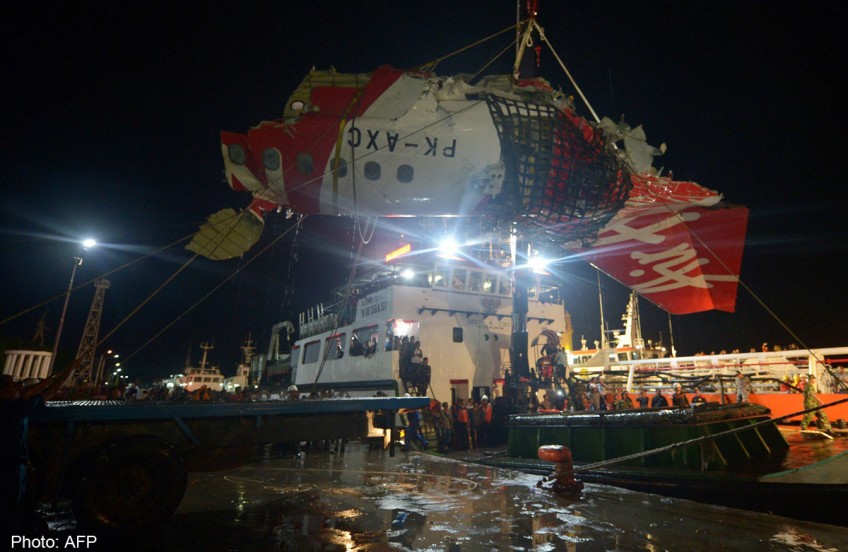CAAS: S'pore carriers give pilots pre-flight briefing file

SINGAPORE - The necessity of pilot briefings on weather conditions was questioned after Indonesia's Transport Minister Ignatius Jonan chastised AirAsia Indonesia executives for not conducting what he claimed were mandatory briefings for the pilots of flight QZ8501.
But aviation experts said that most airline pilots around the world conduct self-briefings before a flight.
Here's how it works: A dispatcher hired by the airline would prepare all the relevant information - such as weather conditions and aircraft information - before a flight.
At the airline's office, the pilot would receive the documents, study them and request for more information if required.
There will be someone to answer any questions and put in changes that the pilot requests.
"If all is okay, the pilot and dispatcher will then sign the document," said Mr Gerry Soejatman, an independent aviation consultant based in Jakarta, Indonesia.
Mr Soejatman added that face-to-face briefings with the pilot before each flight is not necessary.
Several Indonesian pilots had rebutted the transport's minister's claims, and said such briefings were not part of the required procedures.
The pilots added that they read up on weather conditions before a flight but do not attend briefings.
When contacted by The New Paper, the Civil Aviation Authority of Singapore said all Singapore carriers are required to provide their pilots with a pre-flight briefing package.
This includes information such as weather conditions, status of the aircraft and estimated passenger and cargo loads for the flight.
She added: "The pilots obtain the pre-flight briefing package from their airline operations centre in Singapore or flight despatch services at overseas stations."
And such pre-flight information is a standard practice worldwide, said UK-based aviation safety expert Chris Yates.
"To do otherwise would be nothing short of foolhardy, since such a package is vital to the safety of the flight," added Mr Yates.
The Indonesian minister's comments followed reports that harsh weather conditions were a factor in the crash of flight Qz8501.
DISAPPEARED
The pilot of QZ8501 had requested to fly at a higher altitude because of the weather, before disappearing from radar. The plane, which was flying from Surabaya to Singapore, crashed into the Java Sea on Dec 28, killing all 162 people onboard.
Mr Yates said that all aircraft are installed with a forward-looking weather radar which gives a second-by-second readout of the weather ahead of the flight.
"It's my guess that at the time of the accident the pilot requested alterations in direction and height in an attempt to find clearer air in which to fly, but in the event he was just seconds away from disaster."
Course manager of Temasek Polytechnic's Aviation Management and Services, Mr Paul Yap, said pilots are trained to assess their options during adverse weather conditions.
The rule of thumb is to fly around (left or right) of the storm, but they could also choose to fly through the storm and the last resort is to fly over the storm.
"While sharp and violent weather changes can be quite devastating, it is usually not the only factor in an aviation disaster.
"It's usually an accumulation of events such as mechanical or system failure and human error."

This article was first published on MONTH DAY, 2015.
Get The New Paper for more stories.